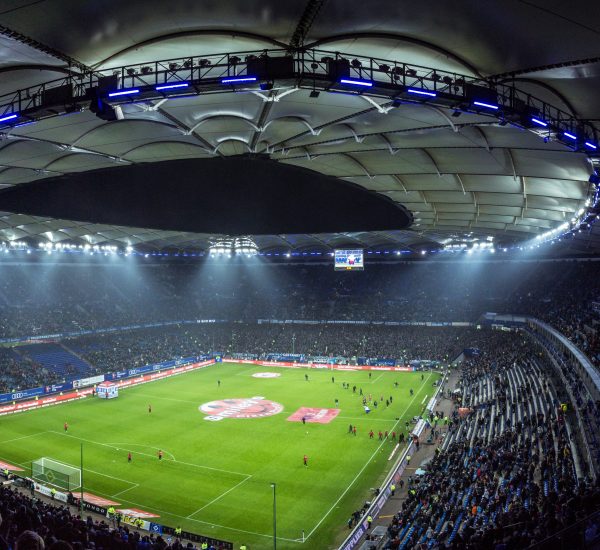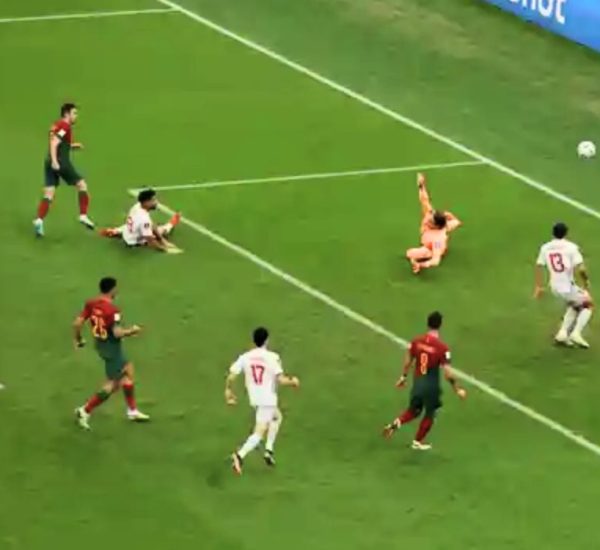A.S. Roma is an Italian professional soccer team that is based in Rome, Italy. They compete in the Serie A, a league reserved for the top 20 Italian sides.
A.S. Roma plays their home games at the Stadio Olimpico, a stadium with a capacity of 70,634 seats. Nicknamed “The She-Wolf” (La Lupa), Roma has known relegation only once since their existence. Their trophy cabinet consists of 3 Serie A, 9 Coppa-Italia, and 2 Supercoppa Italiana titles. During the past years, the Rome based club has produced some of the world finest soccer players. Besides, they are a regular participant in Europe top competitions.
A.S. Roma has a fascinating history that is worth being shared. Let us jump right into the formation of the club.
| Full Name | A.S. Roma |
|---|---|
| Founded | June 7, 1927 |
| Nickname | I Giallorossi |
| Stadium | Stadio Olimpico |
| Capacity | 70,634 |
| Owner | The Friedkin Group (86.6%) |
| Manager | José Mourinho |
| League | Serie A |
Foundation Of A.S. Roma
Associazione Sportiva Roma (A.S. Roma) was first formed in 1927 when Italo Foschi brought together a merger of three smaller capital clubs in Football Club di Roma, Alba-Audace, and Fortitudo-Pro Roma. The reason was clear; to give the Italian capital a club capable of usurping the northern giants in Turin and Lombardy.
Indeed, history could have been different as SS Lazio, the major city rivals of Roma, decided to reject a merger option. In its earliest days, Roma played in the Motovelodrome Appio before moving to the Campo Testaccio in the working-class part of the town in 1929.
Roma began to make impressive strides in fighting back against the bigger teams in the north. Their first and arguably most impressive season came in 1930-31 when they finished as runners-up to Juventus FC. The squad, which consisted of notable players like Attilio Ferraris IV, Guido Masetti, Fulvio Bernardini and Rodolfo Volk, started to attract a fervent fan base now seen as a true team of the capital.
First Scudetto Title
In the seasons that followed, Roma struggled in the league. The team saw several major players move out, and it took a while to rebuild a competitive squad. Despite retaining the Argentine hitman Enrique Guaita, The She-Wolf could not go one better than the runner-up slot. Until the arrival of first-team manager Luigi Barbesino, Roma was treading water.
In 1935-36, though, the club narrowly missed the league title by one point to eventual winners, Bologna FC. The club plunged into another period of inconsistencies and again failed to build on its dominance.
In 1942, 15 years after the formation of the club, Roma finally broke the title jinx. The team which Alfred Shaffer coached won the Scudetto title in the 1941-42 campaign to claim the club’s first-ever trophy. Amadeo Amadei was the homegrown hero of the title win, scoring an impressive 18 goals in a relatively goal-shy Italian top-flight.
Decline And Resurgence
Following the victory, the club struggled to achieve the same success when the World Wars ended. The club began to finish in the lower half of the Italian top flight before being relegated in 1951, just nine years after being crowned champions.
However, they did bounce back to the top flight after Giuseppe Viani took over and restored the clubs’ performance on the pitch. The club began to rebuild around talent like Dino Da Costa, Helge Bronee, and Egisto Pandolfini.
In 1955, Roma once again pushed for a domestic title to finish as runners-up. Englishman Jesse Carver led the club to a third-place finish. However, Udinese, who came second, were relegated on corruption charges.
Cup Success
As the 1960s came into view, the club could participate in the Inter-Cities Fairs Cup, an early competition that the UEFA Cup eventually replaced. The tournament saw Roma head to the Final in the 1960-61 season, where they face English-side Birmingham City. Roma won the two-legged final by 4-2, and it was a truly spectacular moment in the club’s history. It was, for many fans, as big – if not bigger – than the league title win in the early 1940s.
More success also arrived in the domestic cup when they won the Coppa Italia for the first time. They came up against Torino FC of Turin in the 1964 Final, winning by 1-0. These two titles would spell false dawn for Roma fans who were hoping for a golden era.
In 1964-65, the club was in serious financial disarray. Manager Juan Carlos Lorenzo announced that they could not pay players or even afford travel to an away tie in Vicenza. The club avoided bankruptcy thanks to a successful fundraiser and the election of a new President, Franco Evangelisti.
The club finished the 1960s with another Coppa Italia win in 1969, while they saw club legend Giacomo Losi set a club record of 450 club appearances.
The Dino Viola And Nils Liedholm Era
In the 1970s, Roma appointed Gaetano Anzalone as their President and signed up former AC Milan legend Nils Liedholm as manager. The Swedish legend put his faith in the club’s youth system. With the promotion of young players like Francesco Rocca, the strategy paid off as the club finish third in the 1975 season.
The end of the 1970s saw Dino Viola elected as President, and he brought Roma to the very top of the Italian game. The team was built around domestic talent like Bruno Conti and Roberto Pruzzo and foreign talent like Paulo Roberto Falcao.
In the 1980-81 season, the club finished second in the title race to Juventus FC, but did make it up with another Coppa Italia win over Torino FC. This era marked the permanent long-term rivalry with Juventus that, to this day, is one of the most significant rivalries in the domestic game.
The 1982-83 season would see Roma win their second Scudetto title with a Liedholm-built side that would impose their dominance in the domestic front for much of the 1980s.
In the 1984 season, Roma, as defending Italian champions, competed in the European Cup. They reached the Final, being held at their home stadium of the Stadio Olimpico. However, they would face English giants Liverpool and eventually lose the match on a gut-wrenching penalty shootout after a 1-1 draw. While they did win the Coppa Italia in the same season, the European cup defeat was seen as the biggest loss in Roma’s history.
More pain was to come, as Swedish coach Sven Goran Eriksson took the club to the UEFA Cup Final in 1991. They lost to Internazionale (Inter Milan) by 2-1 on aggregate. The season, though, did end with the club’s seventh Coppa Italia trophy, courtesy of a win against Sampdoria.
Franco Sensi And The New Millenium
Following his joint presidency at the club, Franco Sensi became the sole owner of Roma. As a diehard Roma fan, he promised to rebuild and revolutionize the club. However, despite mass changes to players and coaching staffs, success was still fleeting.
As the new millennium arrived, Roma was littered with star players like Cafu, Damiano Tommasi, and Marco Delvecchio. Chief among them, though, was homegrown club legend Francesco Totti who was transforming into the best player in the country.
Totti was the club captain in the 2000-01 season when Roma lifted the title under the celebrated Fabio Capello. Sensi had invested heavily in the club, but it was the signing of veteran legend Gabriel Batistuta that brought the third Scudetto title home in 2001.
For Roma, though, the flux period began post-title and led to many periods of underperformance and managerial changes. The arrival of Luciano Spalletti made Roma a team to watch, developing them into one of the leading contenders for the Italian top-flight title. However, despite regular second-place finishes behind Internazionale and Juventus, Roma was yet to fight for a title.
The modern era’s most considerable success includes two Coppa Italia victories in 2007 and 2009, both coming against Inter Milan. The 2009 season also saw the tragic death of club President Franco Sensi. His daughter, Rosella, took over after his demise.
The New Era
Roma has since undergone various ownership changes. It includes being sold to American investor James Pallotta. Despite reforming the club commercially, the Rome based side is yet to achieve success.
The 2017-18 UEFA Champions League campaign is one of the few highlights of the recent decade. Despite a great run and their heroics against Barcelona FC in the competition’s quarter-finals, the club was knocked out in the semi-finals by Liverpool FC.
The Pallotta era was primarily financial readjustment, bringing around a financially decrepit asset and restoring the club’s value. In 2020, The Friedkin Group purchased Roma. They promised and pledged to invest in the club and make AS Roma one of world soccer’s greatest names.
References:
- Date accessed: March 28, 2021. Official AS Roma Website. History: https://bit.ly/39lG8SA
- Date accessed: March 28, 2021. Wikipedia. A.S. Roma: https://bit.ly/3flHws7
- Date accessed: March 28, 2021. Wikipedia. History of A.S. Roma: https://bit.ly/3u0dPkj



